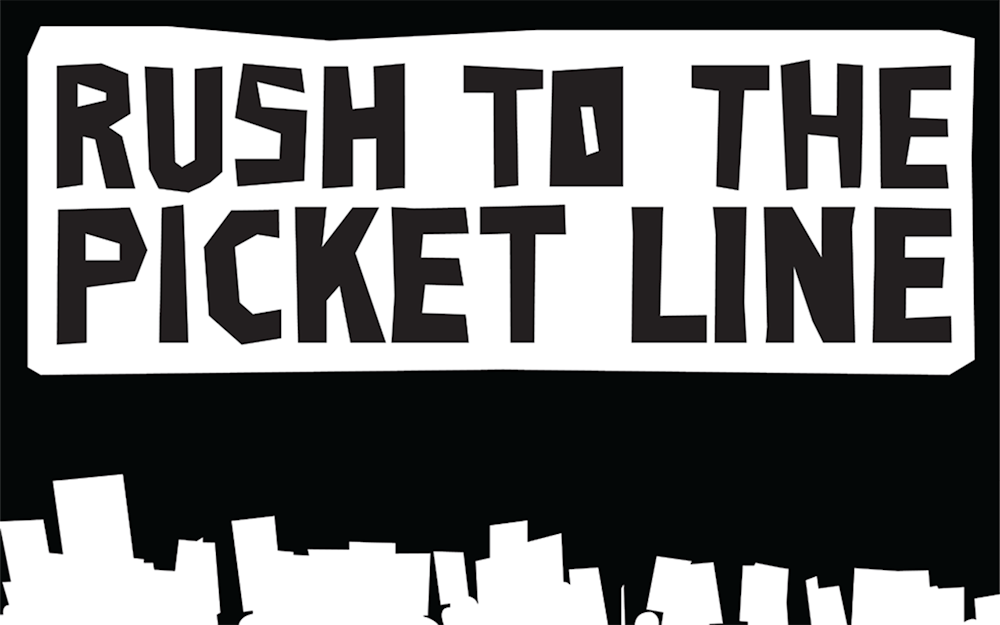Kate Farr is a second-year journalism major and writes “Face to Face” for the Daily News. Her views do not necessarily reflect those of the newspaper.
From late May to August this year, I lived in Atlanta with my partner, Riley. He moved there in August 2021 — only a couple of months after graduating high school — at the age of 18 to pursue work in the film industry.
Long-distance has never been easy. We’ve been doing it for nearly three years now. And between Facetime calls and seeing each other for maybe a weekend every few months, Riley had a hard enough time getting work and breaking into a competitive industry.
As he gained his footing, he applied for membership with IATSE 479, the Georgia and Alabama union chapter for crew workers in the entertainment industry. His application was accepted and paid his initiation fee.
It seemed like he would soon be on bigger productions in Atlanta and begin chipping away toward gaining union benefits. But everything was put on hold this past July. On top of being a full-time student, his work was what was paying his way through college, covering his rent and providing him with groceries.
While the negotiations for the Screen Actors Guild – American Federation of Television and Radio Artists (SAG-AFTRA)’s new contract began March 2023, he didn’t expect the strike to have the gravity and longevity it did.
By hopping onto any project thrown his way — whether it was an independent music video or any non-union project still in the works despite the strike — we were able to make ends meet over the summer. While I left come August to return to Indiana, the dry spell for union work in Atlanta wasn’t over until SAG-AFTRA’s union committee tentatively reached a deal in November.
I knew it wasn’t an ideal start to his career, and I saw first-hand his many restless nights either losing sleep over the lack of work or working late hours on indie projects. But the film industry’s prolonged strike was only the peak of this year’s strike iceberg.
The strikes shed light on a bigger issue: unions could be thriving in this current surge of worker protests, but union-busting efforts often scare workers into staying compliant.
But where there’s a will, there’s a way.
Picketing. Protests. Walkouts. 2023 saw a surge in U.S. labor movements. From Starbucks to Amazon, Hollywood writers to healthcare providers, it’s become clear that there’s a growing dissatisfaction among workers in dozens of industries.
A study from Cornell University found that strikes rose by 52 percent and more than 224,000 workers were involved in the effort.
While it was a summer of strikes, the number of American workers in unions remained almost unchanged compared to the year prior. As unions gained memberships from many of the year’s high-profile strikes — including the SAG-AFTRA and Kaiser healthcare workers strikes — the overall rate fell simultaneously, presenting a troubling problem in membership decline.
According to the Bureau of Labor Statistics, the union membership rate among public sector laborers showed little net change from 1983 — the first year where union comparable data became available — to 2011. Since then, membership has declined by 32.5 percent.
As the U.S. makes ongoing efforts to recover from the COVID-19 pandemic, we saw the addition of 2.7 million jobs in 2023. Even with the swell of position openings, many companies continued to enforce anti-union tactics in a ploy to keep workers from organizing and negotiating wages, benefits, workplace safety and other work-related issues.
For instance, at least 293 of Starbucks’ 9,000 company-owned U.S. Starbucks stores voted to unionize in 2021. Starbucks Workers United, the labor group seeking to unionize stores, has yet to reach a contract agreement with the company at any Starbucks store, according to the Associated Press. The chain’s removal and ban on LGBTQ pride decor, as well as unfair labor practices, at several Starbucks stores led to employee walkouts at 150 Starbucks locations, including the Seattle flagship location.
Due to necessity, a majority of Americans have to give their lives and livelihoods by working for a powerful few — a corporation’s board, owner or boss. But the ability to band together and voice collective demands is crucial.
Unions are meant to bridge the gap between workers and those in power. A single laborer has no power to fight for their rights, and they can be replaced if they voice their concerns alone.
Labor organizations are what have given workers rights across the board — whether it be the establishment of 40-hour work weeks or overtime pay in the 1930s and ‘40s — and that’s what companies and corporations fear. Higher wages and benefits cost them money. Unions are in favor of the working person and they level a usually uneven playing field.
But with ongoing strikes and negotiations, unions are missing the mark, which is why the number of workers represented by unions is waning. While recent grassroots activism has led to improvements like wage increases in 2023, it hasn’t translated into any major growths for union enrollments.
The biggest issue is that U.S. labor laws keep workers from successfully organizing and collectively bargaining.
Current labor laws allow corporations to intimidate workers and delay proceedings. And many corporations often illegally fire almost one-third of union organizing efforts, according to the Center for American Progress.
This exploitation and abuse of power is what keeps union success low. It’s what allows just 1 in 7 labor organizations to achieve a first contract.
With the risks at hand, most workers choose not to risk their financial stability by trying to form a union. Policy reform is the only thing that can give unions another chance.
Congress is the next step in making progress. By passing the Protecting the Right to Organize Act and the Public Service Freedom to Negotiate Act, those who want to organize in the workplace won’t have to keep fearing muzzling tactics by company higher-ups.
If the government is for the people and by the people, then it should be ensuring the working class has strong, secure rights. Workers deserve the right to a clear path for joining unions, promoting negotiations and taking part in collective bargaining.
These strikes should stand as a sign that, by all means necessary, workers will find a way to have their demands heard and met.
Contact Kate Farr with comments at kate.farr@bsu.edu.





